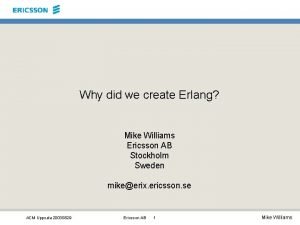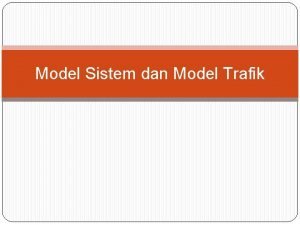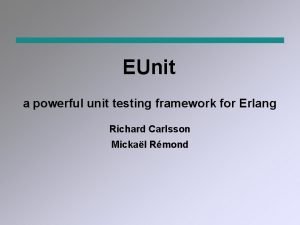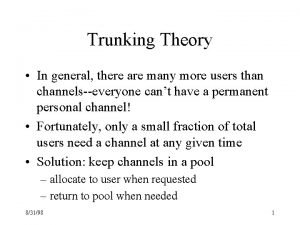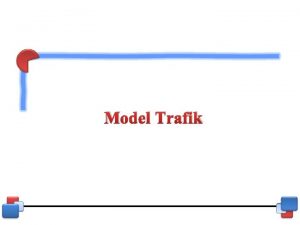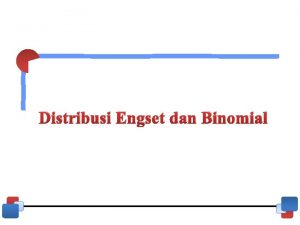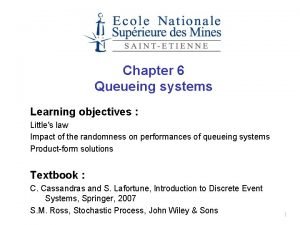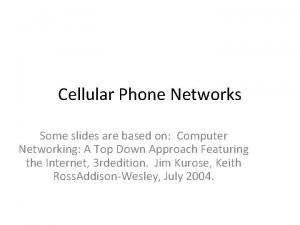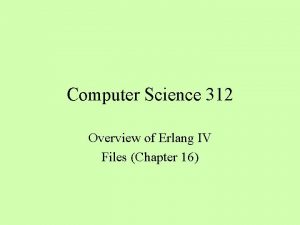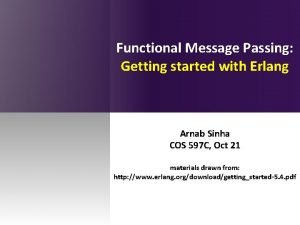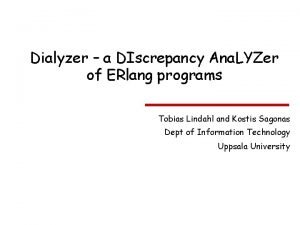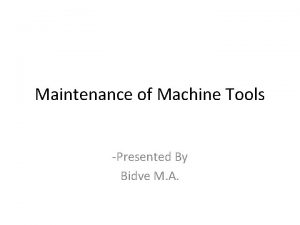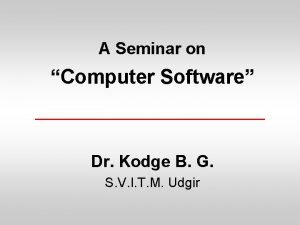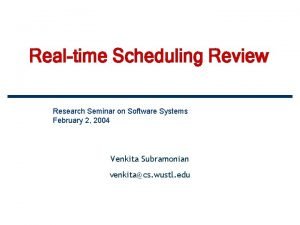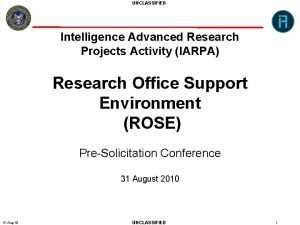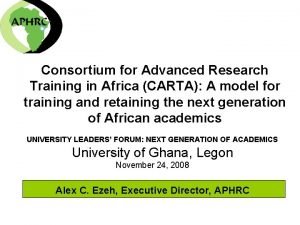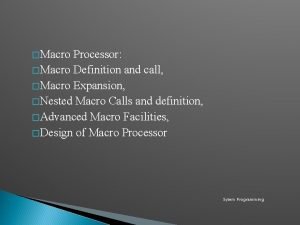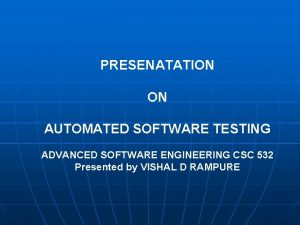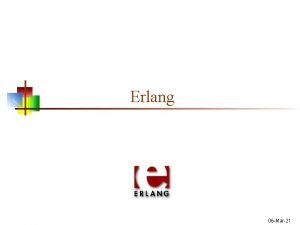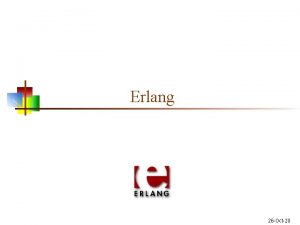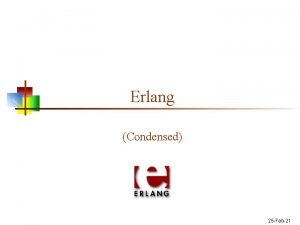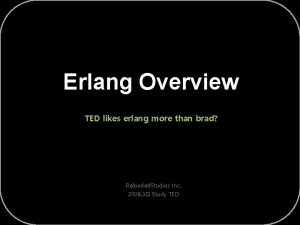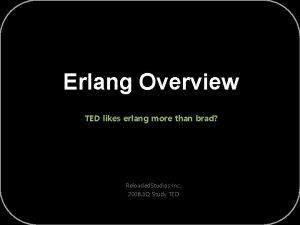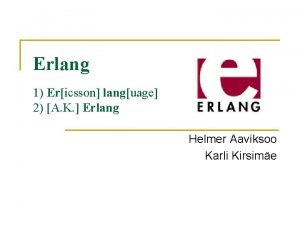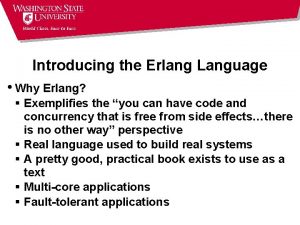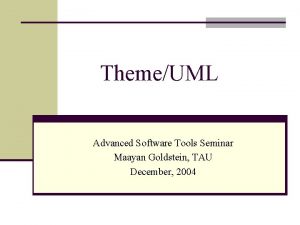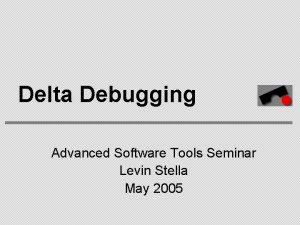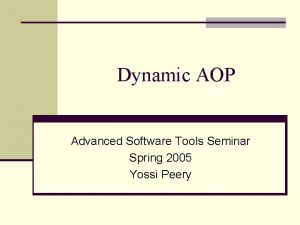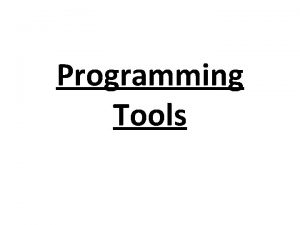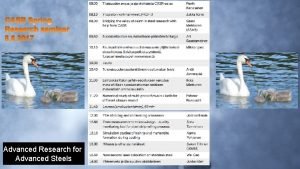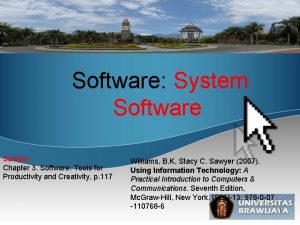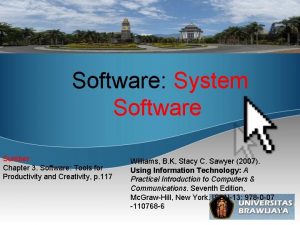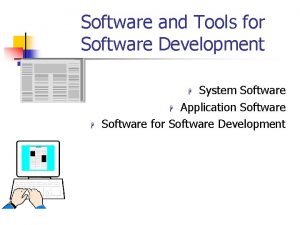Introduction To Erlang Advanced Software Tools Research Seminar


































- Slides: 34

Introduction To Erlang Advanced Software Tools Research Seminar Fall 07 Arik Nemtsov

Agenda � Design Goals & History � Basic Syntax � Main strengths ◦ ◦ Concurrency Oriented Programming Distributed Programming Soft Real-time Environment Continuous Operation ◦ ◦ Criticism Real World Development using Erlang Bit Syntax Usage Examples � Misc

Erlang Design Goals � Support � Soft of concurrency real-time environment � Continuous � Support � Easy operation – no downtime of distributed computing integration with binary modules

History 1982 – 1985 - Experiments with programming of telecom using > 20 different languages. Conclusion: The language must be a very high level symbolic language in order to achieve productivity gains ! (Leaves us with: Lisp , Prolog , Parlog. . . ) � 1985 – 86 - Experiments with Lisp, Prolog, Parlog etc. Conclusion: The language must contain primitives for concurrency and error recovery, and the execution model must not have back-tracking (Rules out Lisp and Prolog. ) � 1988 - Prototype construction of PABX functionality by external users. Erlang escapes from the lab! � 1989 - ACS/Dunder Phase 2. Reconstruction of 1/10 of the complete MD-110 system. Results: 10 times � greater gains in efficiency at construction compared with construction in PLEX!

History (2) � 1991 - Fast implementation of Erlang is released to users. Erlang is represented at Telecom'91. More functionality such as ASN 1 - Compiler , graphical interface etc. � 1992 - A lot of new users. Erlang is ported to Vx. Works, PC, Macintosh etc. Three applications using Erlang are presented at ISS'92. The two first product projects using Erlang are started. � 1993 - Distribution is added to Erlang, which makes it possible to run a homgeneous Erlang system on a heterogeneous hardware. � 1996 – 1997 – construction of BEAM – Erlang to C compiler. Replaces old compiler.

Unique development process � Specific problem at hand: large soft real-time control systems ◦ Millions of lines of code ◦ Robust – 3 min/year downtime � Prototype language used for massively concurrent projects � Language features removed/added by developer demand

Basic Syntax

Basic Syntax (2)

Basic Properties � Declarative syntax � Single assignment property � Data Types: ◦ Primitive: �Numbers – 1, 2#101011, 16#1 FFA 3, $B, 0. 23 �Atoms – mememe, start_with_lower_case, ‘quoted’ ◦ Complex: �Lists – [123, xyz, ’aaa’] �Tuples – {123, xyz, ‘aaa’} �String implemented as a list of integers “abc” <-> [97, 98, 99] � Variables start with an Uppercase letter

More Examples

Concurrent Programming: Current State of Affairs � C#, Java – shared state concurrency ◦ Any thread can modify any state at any time ◦ All synchronization is explicit, manual ◦ No compile-time verification of correctness properties: �Deadlock-free �Race-free � Software generally scales poorly to thread count (= multi-processors)

Concurrent Programming: The Hardware world � At present: � In a couple of years: ◦ Xbox 360 – 3 cores ◦ Intel Core 2 – up to 4 cores ◦ Sun T 2000 – 8 cores, 32 hardware threads ◦ 20+ cores ◦ 80+ hardware threads � Multi-core support is a must at this point

Concurrency Oriented Programming (The Erlang Philosophy) � Lightweight Processes ◦ provide a convenient partitioning into concurrent sub-components � Efficiency in scaling to a multi-processor environment ◦ Functional programming style avoids mutable state ◦ Message passing avoids shared state � Fault isolation ◦ no sharing of data that can be corrupted (affecting many processes)

Properties of a COPL � Support of processes ◦ a sort of self contained VMs ◦ Processes are strongly isolated � Each process has a unique identifier ◦ The name of a process cannot be forged � Message passing is the only way processes interact � Message passing is unreliable ◦ The is no shared state ◦ If one knows the name of a process it can send a message to the process ◦ Messages are delivered asynchronously ◦ Messages are atomic – they are either delivered, or not �A process can detect failure in another process ◦ We should also be able to find the reason for failure

Concurrent Programming in Erlang � Support of lightweight processes � Process naming scheme ◦ ◦ All executed code resides inside processes No use of OS processes/threads Built-in scheduler Processes share no resources ◦ register(Name, Pid) � Non local Error handling ◦ Error-kernel: not all processes must be correct ◦ Leads to fault-tolerance � Uses Actor Model

Concurrent Programming in Erlang (2) � Message Passing ◦ One must know the name/Pid of process to send it a message � Why not shared memory? ◦ Critical Regions �Programs crash in a critical region (lacking transaction semantics) �Programs spend too much time in a critical region �Locking more than you need ◦ No support of distribution – multi CPU/multi physical computers ◦ Can introduce deadlocks ◦ Creates process inter-dependency -> error prone -> unreliable

Examples

Examples (2)

Process Exit Signal Trapping � Erlang allows linking of processes � Exit signals propagate through linked processes � Policy choice: ◦ Trap exit signal – no process termination ◦ No trapping – termination � Allows design of layered applications: ◦ No error handling code at lower levels ◦ Encourages application modularity

Examples (3) � Parent traps child exit � Re-spawns the child if K > 0

Distributed Programming � Transparent extension across many nodes ◦ Process spawning ◦ Message passing (IPC) – not so easy � Code marshalling issues handled by environment ◦ Essentially enables code “hot-swapping” – run time replacement of executable modules � Leads to a fault tolerant programming paradigm � Additional security considerations

Example

Example - Code Hot-Swapping

Code Hot-Swapping (2)

Soft Real-time Environment � Little need of OS services (Makes porting easier) � Real-time garbage collector � Lightweight processes � Efficient message passing � Internal cooperative process scheduler

Continuous Operation � Dynamic module upgrade mechanism ◦ Old and Current code can run in parallel � Advanced error detection primitives ◦ Process exit signal trapping ◦ Exception handling mechanism

Erlang-OS (ERTS) � Process Management ◦ Scheduler, I/O, … � Memory Management ◦ Garbage Collector � Process Isolation & Security ◦ Process Registration, Naming issues � Networking ◦ Distributed Computing � Device ◦ Ports Drivers

Criticism � Primitive security model � Message Passing only IPC ◦ How to restrict access to a node? ◦ Limit the abilities of a process ◦ Copying of buffers back and forth �How to program “Photoshop”? ◦ Game-state simulation � 1000’s of objects updated 30 times per second. Each update touches up to 5 -10 other objects. (Tim Sweeny) �How to program “Quake”?

Real World Erlang Development � OTP core library ◦ OTP “drives” the application and you supply the “business logic” via callbacks ◦ Many useful generalization of behavior (e. g. gen_server) ◦ Battle-tested in Ericsson (scalability, reliability) � Good software development tools ◦ Fast Native compiler ◦ Helper tools – debugger, procman, table viewer, … ◦ Again tested by ericsson � Ecplise IDE Plugin! (December 2007)

Misc � Bit Syntax � Real ◦ ◦ World projects: Ejabberd – jabber server Yaws – web server Erly. Web – web application framework (a la “Rails”) Erricsson AXD 301 – 1. 7 MLOC � Erlang for. NET

Process Start Times

Message Passing Times

Eclipse Plug-in

Apache vs. Yaws Throughput (kb/sec) vs. load (requests) � � Apache dies at ~4000 requests Yaws endures very high loads
 Mike williams erlang
Mike williams erlang Tabel erlang
Tabel erlang Erlang unit test
Erlang unit test Who developed the fundamental of trunking theory? *
Who developed the fundamental of trunking theory? * Erlang b
Erlang b Contoh soal distribusi erlang
Contoh soal distribusi erlang Engset
Engset Littles law
Littles law Erlang b
Erlang b Erlang b
Erlang b Erlang file consult
Erlang file consult Sunha cos
Sunha cos Dialyzer erlang
Dialyzer erlang Internet tools for advanced nursing practice
Internet tools for advanced nursing practice Advanced maintenance for machine tools
Advanced maintenance for machine tools Construct validity meaning in research
Construct validity meaning in research Operational definition of variables psychology
Operational definition of variables psychology Seminar about computer software
Seminar about computer software Seminar scheduling software
Seminar scheduling software Conclusion of seminar presentation
Conclusion of seminar presentation Introduction to seminar
Introduction to seminar Seminar opening lines
Seminar opening lines Debate points
Debate points Intelligence advanced research projects activity
Intelligence advanced research projects activity Estrutura de uma carta informal
Estrutura de uma carta informal Advanced business research methods
Advanced business research methods Advanced higher modern studies research methods
Advanced higher modern studies research methods Homeland security advanced research projects agency
Homeland security advanced research projects agency Homeland security advanced research projects agency
Homeland security advanced research projects agency Operators for advanced internet legal research
Operators for advanced internet legal research Advanced research group
Advanced research group Advanced topics in software analysis and testing
Advanced topics in software analysis and testing Advanced software development
Advanced software development Expansion time variable are used
Expansion time variable are used Advanced software testing concepts
Advanced software testing concepts
